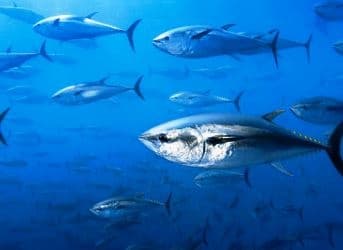After the Deepwater Horizon oil spill, crude oil toxicity continued to sicken a sentinel Gulf Coast fish species for at least a year or more, new research shows.
The researchers found that Gulf of Mexico killifish embryos exposed to sediments from oiled locations in 2010 and 2011 show developmental abnormalities, including heart defects, delayed hatching, and reduced hatching success.

Killifish exposed to sediments from oiled sites affected by the Deepwater Horizon spill continue to show health defects, three years after the spill. (Credit: Andrew Whitehead/UC Davis)
The killifish is an environmental indicator species, or a “canary in the coal mine,” used to predict broader exposures and health risks.
Related article: Exxon Oil Spill in Arkansas, Keystone Spoiler?
The findings, posted online before publication in Environmental Science and Technology, are part of an ongoing collaborative effort to track the impacts of the Deepwater Horizon oil spill on Gulf killifish populations in areas of Louisiana that received heavy amounts of oil.
Other species that share similar habitats with the Gulf killifish, such as redfish, speckled trout, flounder, blue crabs, shrimp, and oysters—may be at risk of similar effects.
“These effects are characteristic of crude oil toxicity,” says co-author Andrew Whitehead, an assistant professor of environmental toxicology at University of California, Davis. “It’s important that we observe it in the context of the Deepwater Horizon spill because it tells us it is far too early to say the effects of the oil spill are known and inconsequential. By definition, effects on reproduction and development—effects that could impact populations—can take time to emerge.”
Killifish are abundant in the coastal marsh habitats along the Gulf Coast. Though not fished commercially, they are an important forage fish and a key member of the ecological community. Because they don’t migrate, measurements of their health are indicative of their local environment, making them an ideal subject for study.
The researchers collected Gulf killifish from an oiled site at Isle Grande Terre, Louisiana, and monitored them for measures of exposure to crude oil. They also exposed killifish embryos in the lab to sediment collected from oiled sites at Isle Grande Terre within Barataria Bay in Louisiana.
“Our findings indicate that the developmental success of these fish in the field may be compromised,” says lead author Benjamin Dubansky, who recently earned his Ph.D. from Louisiana State University.
Related article: PERU: Environmental Authorities Get Serious
Whitehead says the report’s findings may predict longer-term impacts to killifish populations. However, oil from the Deepwater Horizon spill showed up in patches, rather than coating the coastline. That means some killifish could have been hit hard by the spill while others were less impacted.
Whitehead says it is possible that some of the healthier, less impacted killifish could buffer the effects of the spill for the population as a whole.
The National Science Foundation, the Gulf of Mexico Research Initiative, and the National Institutes of Health funded the study.
The researchers, including additional scientists from Louisiana State University and Clemson University, have tracked the impact of the oil on killifish since the Deepwater Horizon spill occurred in April 2010.
By. Kat Kerlin


















